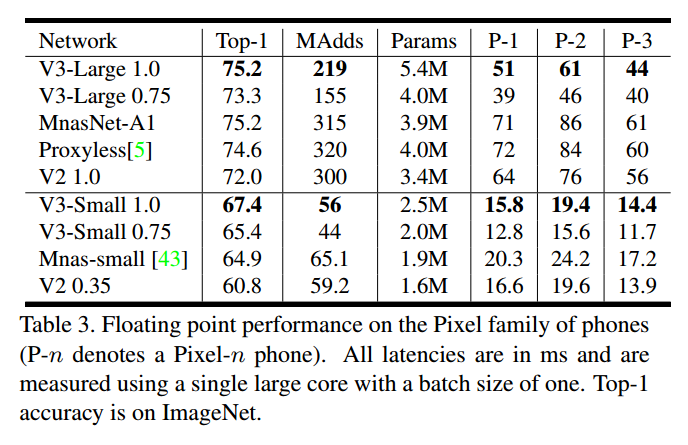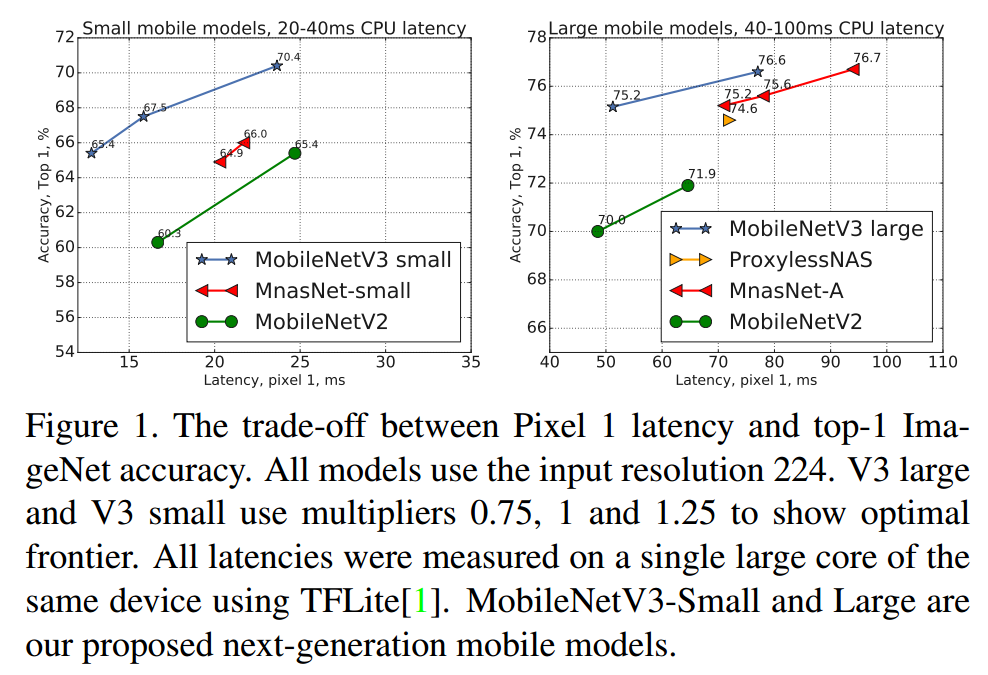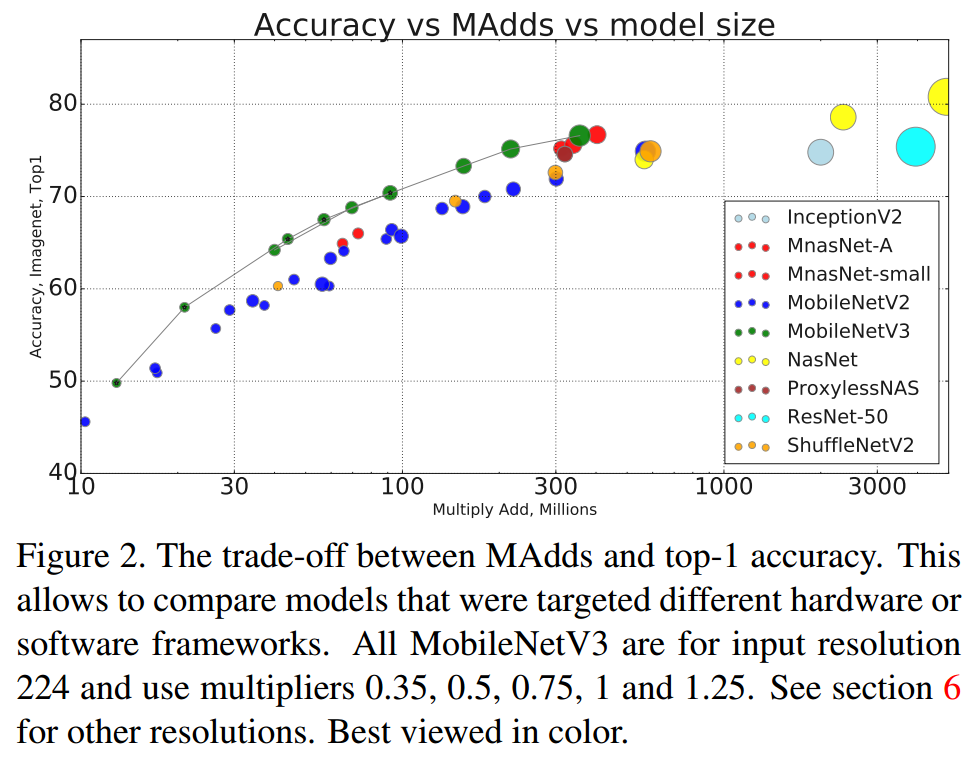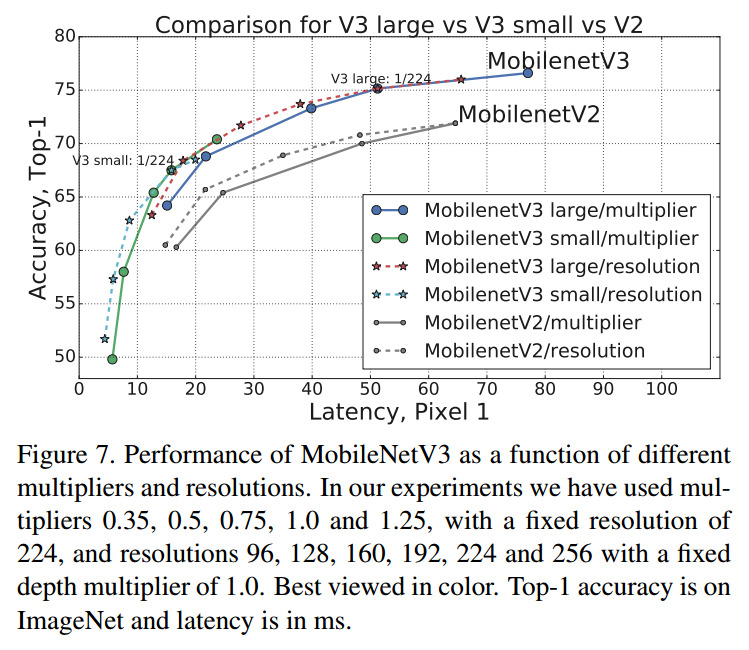1、引言
主要创新:
1)complementary search techniques
2)new efficient versions of nonlinearities practical for mobile setting
3)new efficient network design
4)a new efficient segmentation decoder
2、相关工作
1)novel handcrafted structures
SqueezeNet、MobileNet、ShuffleNet、CondenseNet、ShiftNet
2)algorithmic neural architecture search
3)quantization
4)knowledge distillation
3、高效的mobile building blocks
1)MobileNet-V1:depth-wise separable convolution
2)MobileNet-V2:linear bottleneck and inverted residual
3)MnasNet:light attention modules based on squeeze and excitation into the bottleneck
MobileNet-V3结合了上述三种思想
4、网络搜索
1)全局网络结构(block-wise):platform-aware NAS(network architecture search)
2)每层filters的数量(layer-wise):NetAdapt algorithm
5、网络提升
主要创新:重新设计网络最开始和最后computionally-expensive 的层,介绍了一种新的nonlinearity-h-swish,计算更快且对于量化更加友好。
1)重新设计expensive layers
A)之前的模型一般都将1*1 conv作为最终的layer,以展开到一个更高维的特征空间,这里是先池化再用1*1 conv升维,这样7*7的空间分辨率就变成了1*1的了。
B)Remove the projection and filtering layers in the previous bottleneck layer。
C)之前的模型倾向于使用32个filters的3*3空间卷积来作为初始层,这里引入hard swish非线性,只用16个filters就可以达到相同的准确率。
2)非线性
引入了h-swish(x)作为非线性函数:

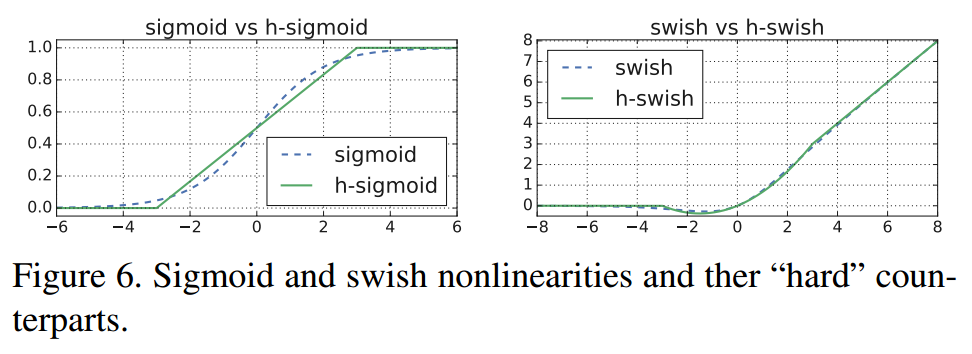
3)模型架构
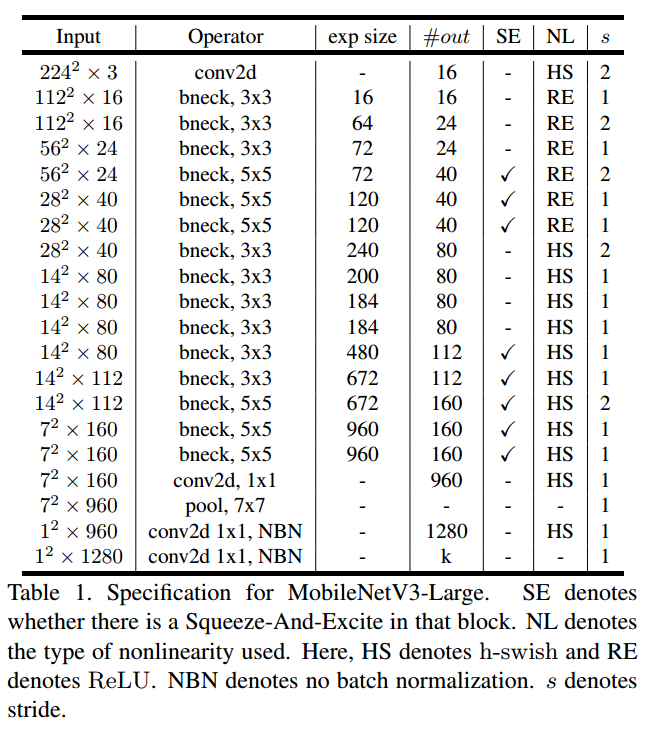

6、实验
